-

Jun
02
Interpretive Summary: Effects of supplementation rate of an extruded dried distillers’ grains cube fed to growing heifers on voluntary intake and digestibility of bermudagrass hay

Growing cattle are oftentimes provided supplemental concentrate as a source of protein and energy in order to meet performance goals when consuming low-quality forages. The effects of supplemental concentrate on forage intake vary, which may be related to the quality of forage and the characteristics of the supplement being evaluated.
Read more
-

Jun
02
Interpretive Summary: Maternal nutrient restriction and over-feeding during gestation alter expression of key factors involved in placental development and vascularization
.png?sfvrsn=ca584dd1_0)
Too little or too much food during gestation can lead to poor growth and health of the resulting offspring. The placenta is an important source of nutrient supply for the fetus and poor maternal diet can impair placenta growth and function.
Read more
-

Jun
02
Interpretive Summary: Naturally occurring androgen excess cows are present in dairy and beef herds and have similar characteristics to women with PCOS
.png?sfvrsn=445f4dd1_0)
Androgen steroid hormones, normally present in the male, but produced in excess in the female, can result in inflammation and dysfunction of tissues, which, in turn, can lead to ovulatory dysfunction.
Read more
-

Jun
02
Interpretive Summary: Short Communication: Influence of estrus activity and reproductive tract size and position scores on fertility in Bos indicus and Bos taurus suckled beef cows
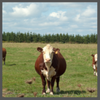
The livelihood of a cow-calf producer relies on reproductively sound cattle that give birth to live offspring once a year. Two factors, pregnancy rate and pregnancy loss, are informative measures of fertility.
Read more
-

Jun
02
Interpretive Summary: Medroxyprogesterone acetate in reindeer bulls: testes histology, cfos activity in the brain, breeding success, and semen quality
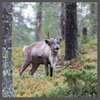
A single 400 mg dose of MPA given to reindeer bulls just before the onset of rut eliminates aggressive behavior and suppresses androgen concentrations without dramatic differences in the gross or histological structure of the testes within the first 30 d of treatment.
Read more
-

Jun
02
Interpretive Summary: In vivo investigation of ruminant placenta function and physiology—a review
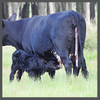
Optimal placental function is required for offspring to reach their genetic potential in utero, and functional placental insufficiency not only results in increased offspring morbidity and mortality, but can impact production traits long-term.
Read more
-

May
26
White House to hold conference on Hunger, Nutrition, and Health
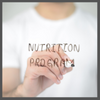
For the first time in more than 50 years, The United States White House announced it will hold a conference on hunger, nutrition, and health. This conference comes as The White House has expressed its commitment to end hunger, improve nutrition and physical activity, reduce diet-related diseases, and close disparity gaps by 2030.
Read more
-

May
26
USDA updates 3 key crop insurance options for livestock producers
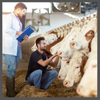
The United States Department of Agriculture (USDA) has updated three key crop insurance options for livestock producers: the Dairy Revenue Protection (DRP), Livestock Gross Margin (LGM), and Livestock Risk Protection (LRP).
Read more
-

May
26
Ukraine emergency funds calls for $500M for US producers

The Biden Administration recently requested Congress to supply emergency supplemental funding, due to the war in Ukraine. In the $33 billion supplemental requests, the administration is seeking $500 million in food production assistance for U.S. farmers to incentivize additional production to offset potential shortfalls from Ukraine’s crop.
Read more
-

May
26
Study compares vegetarian diets verses traditional diets in children

A new study published in the journal Pediatrics by researchers at The University of Toronto, found children who eat vegetarian diets have similar growth outcomes to children who eat meat.
Read more
-

May
26
Poll shows people prefer meat over substitutes
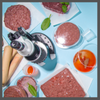
On average, 68% of adults across 31 countries said they are concerned about climate change in their country, yet only 44% say they are likely to eat less meat or replace the meat in some meals with alternatives such as beans to attempt to limit their personal contribution to climate change.
Read more
-

May
26
New research highlights blue light technology on foodborne pathogens
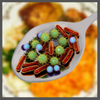
Researchers from The University of Georgia’s (UGA) Center for Food Safety have begun a new study to examine the effectiveness of antimicrobial blue light technology to reduce the foodborne pathogens that cause food poisoning.
Read more
-

May
26
Flavored milk will be allowed in NY schools
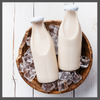
The International Dairy Foods Association (IDFA) has advocated for the inclusion of flavored milk in NYC schools. “I am pleased to see Mayor Adams following the lead of parents, physicians, and dietitians, all of whom widely support offering low-fat flavored milk to students in our public schools,” said Michael Dykes, D.V.M., president and CEO of IDFA.
Read more
-

May
26
Farmer’s request for extension to SEC proposed rule granted

The Enhancement and Standardization of Climate-Related Disclosures for Investors, a proposed rule by the United States Securities and Exchange Commission (SEC), would require registrants to provide certain climate-related information in their registration statements and annual reports.
Read more
-

May
26
“Big Four” meatpacker CEOs testify in front of congress
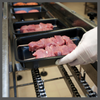
The top executives of the four biggest meatpacking companies in the United States faced lawmakers on Capitol Hill, regarding anti-competitive accusations. This is the first time any of the executives provided congressional testimony since the president and some lawmakers accused the companies of unfairly hiking meat prices.
Read more
-

May
19
Interpretive Summary: The effects of creep feed composition and form and nursery diet complexity on small intestinal morphology and jejunal mucosa-specific enzyme activities after weaning in pigs
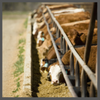
After weaning, the piglet digestive tract must adapt in order to effectively break down and absorb nutrients derived from plant-based ingredients, contributing to the postweaning growth lag.
Read more
-

May
19
Interpretive Summary: Coated tannin supplementation improves growth performance, nutrients digestibility, and intestinal function in weaned piglets
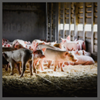
Studies in recent years have shown that tannic acid has various biological functions such as astringency, anti-inflammatory effect, and anti-oxidation property, which has good potential to improve diarrhea and intestinal health of animals.
Read more
-

May
19
Interpretive Summary: Effects of ferulic acid on the growth performance, antioxidant capacity, and intestinal development of piglets with intrauterine growth retardation
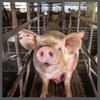
Intrauterine growth retardation (IUGR) impairs postnatal growth and development in neonatal piglets. Ferulic acid (FA) is a ubiquitous phenolic compound that is present in numerous fruits and vegetables and possesses various biological activities.
Read more
-

May
19
Interpretive Summary: Identification of functional single nucleotide polymorphisms in the porcine SLC6A4 gene associated with aggressive behavior in weaned pigs after mixing
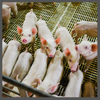
The current study identified the functional single nucleotide polymorphisms for the porcine SLC6A4 (serotonin transporter) gene associated with aggressive behavior of pigs after mixing.
Read more
-

May
19
Interpretive Summary: Effect of chemical and biological preservatives and ensiling stage on the dry matter loss, nutritional value, microbial counts, and ruminal in vitro gas production kinetics of wet brewer’s grain silage
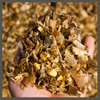
Wet brewer’s grain (WBG) is the most abundant byproduct in the manufacture of beer and its rich nutritional composition makes it a valuable feed for cattle. However, WBG is highly susceptible to spoilage so the application of cost-effective preservatives may be a viable approach to prevent nutrient losses during ensiling and feed out.
Read more
 JunInterpretive Summary: Effects of supplementation rate of an extruded dried distillers’ grains cube fed to growing heifers on voluntary intake and digestibility of bermudagrass hay
JunInterpretive Summary: Effects of supplementation rate of an extruded dried distillers’ grains cube fed to growing heifers on voluntary intake and digestibility of bermudagrass hay Growing cattle are oftentimes provided supplemental concentrate as a source of protein and energy in order to meet performance goals when consuming low-quality forages. The effects of supplemental concentrate on forage intake vary, which may be related to the quality of forage and the characteristics of the supplement being evaluated.
Growing cattle are oftentimes provided supplemental concentrate as a source of protein and energy in order to meet performance goals when consuming low-quality forages. The effects of supplemental concentrate on forage intake vary, which may be related to the quality of forage and the characteristics of the supplement being evaluated. JunInterpretive Summary: Maternal nutrient restriction and over-feeding during gestation alter expression of key factors involved in placental development and vascularization
JunInterpretive Summary: Maternal nutrient restriction and over-feeding during gestation alter expression of key factors involved in placental development and vascularization.png?sfvrsn=ca584dd1_0) Too little or too much food during gestation can lead to poor growth and health of the resulting offspring. The placenta is an important source of nutrient supply for the fetus and poor maternal diet can impair placenta growth and function.
Too little or too much food during gestation can lead to poor growth and health of the resulting offspring. The placenta is an important source of nutrient supply for the fetus and poor maternal diet can impair placenta growth and function. JunInterpretive Summary: Naturally occurring androgen excess cows are present in dairy and beef herds and have similar characteristics to women with PCOS
JunInterpretive Summary: Naturally occurring androgen excess cows are present in dairy and beef herds and have similar characteristics to women with PCOS.png?sfvrsn=445f4dd1_0) Androgen steroid hormones, normally present in the male, but produced in excess in the female, can result in inflammation and dysfunction of tissues, which, in turn, can lead to ovulatory dysfunction.
Androgen steroid hormones, normally present in the male, but produced in excess in the female, can result in inflammation and dysfunction of tissues, which, in turn, can lead to ovulatory dysfunction. JunInterpretive Summary: Short Communication: Influence of estrus activity and reproductive tract size and position scores on fertility in Bos indicus and Bos taurus suckled beef cows
JunInterpretive Summary: Short Communication: Influence of estrus activity and reproductive tract size and position scores on fertility in Bos indicus and Bos taurus suckled beef cows The livelihood of a cow-calf producer relies on reproductively sound cattle that give birth to live offspring once a year. Two factors, pregnancy rate and pregnancy loss, are informative measures of fertility.
The livelihood of a cow-calf producer relies on reproductively sound cattle that give birth to live offspring once a year. Two factors, pregnancy rate and pregnancy loss, are informative measures of fertility. JunInterpretive Summary: Medroxyprogesterone acetate in reindeer bulls: testes histology, cfos activity in the brain, breeding success, and semen quality
JunInterpretive Summary: Medroxyprogesterone acetate in reindeer bulls: testes histology, cfos activity in the brain, breeding success, and semen quality A single 400 mg dose of MPA given to reindeer bulls just before the onset of rut eliminates aggressive behavior and suppresses androgen concentrations without dramatic differences in the gross or histological structure of the testes within the first 30 d of treatment.
A single 400 mg dose of MPA given to reindeer bulls just before the onset of rut eliminates aggressive behavior and suppresses androgen concentrations without dramatic differences in the gross or histological structure of the testes within the first 30 d of treatment. JunInterpretive Summary: In vivo investigation of ruminant placenta function and physiology—a review
JunInterpretive Summary: In vivo investigation of ruminant placenta function and physiology—a review Optimal placental function is required for offspring to reach their genetic potential in utero, and functional placental insufficiency not only results in increased offspring morbidity and mortality, but can impact production traits long-term.
Optimal placental function is required for offspring to reach their genetic potential in utero, and functional placental insufficiency not only results in increased offspring morbidity and mortality, but can impact production traits long-term. MayWhite House to hold conference on Hunger, Nutrition, and Health
MayWhite House to hold conference on Hunger, Nutrition, and Health For the first time in more than 50 years, The United States White House announced it will hold a conference on hunger, nutrition, and health. This conference comes as The White House has expressed its commitment to end hunger, improve nutrition and physical activity, reduce diet-related diseases, and close disparity gaps by 2030.
For the first time in more than 50 years, The United States White House announced it will hold a conference on hunger, nutrition, and health. This conference comes as The White House has expressed its commitment to end hunger, improve nutrition and physical activity, reduce diet-related diseases, and close disparity gaps by 2030. MayUSDA updates 3 key crop insurance options for livestock producers
MayUSDA updates 3 key crop insurance options for livestock producers The United States Department of Agriculture (USDA) has updated three key crop insurance options for livestock producers: the Dairy Revenue Protection (DRP), Livestock Gross Margin (LGM), and Livestock Risk Protection (LRP).
The United States Department of Agriculture (USDA) has updated three key crop insurance options for livestock producers: the Dairy Revenue Protection (DRP), Livestock Gross Margin (LGM), and Livestock Risk Protection (LRP). MayUkraine emergency funds calls for $500M for US producers
MayUkraine emergency funds calls for $500M for US producers The Biden Administration recently requested Congress to supply emergency supplemental funding, due to the war in Ukraine. In the $33 billion supplemental requests, the administration is seeking $500 million in food production assistance for U.S. farmers to incentivize additional production to offset potential shortfalls from Ukraine’s crop.
The Biden Administration recently requested Congress to supply emergency supplemental funding, due to the war in Ukraine. In the $33 billion supplemental requests, the administration is seeking $500 million in food production assistance for U.S. farmers to incentivize additional production to offset potential shortfalls from Ukraine’s crop. MayStudy compares vegetarian diets verses traditional diets in children
MayStudy compares vegetarian diets verses traditional diets in children A new study published in the journal Pediatrics by researchers at The University of Toronto, found children who eat vegetarian diets have similar growth outcomes to children who eat meat.
A new study published in the journal Pediatrics by researchers at The University of Toronto, found children who eat vegetarian diets have similar growth outcomes to children who eat meat. MayPoll shows people prefer meat over substitutes
MayPoll shows people prefer meat over substitutes On average, 68% of adults across 31 countries said they are concerned about climate change in their country, yet only 44% say they are likely to eat less meat or replace the meat in some meals with alternatives such as beans to attempt to limit their personal contribution to climate change.
On average, 68% of adults across 31 countries said they are concerned about climate change in their country, yet only 44% say they are likely to eat less meat or replace the meat in some meals with alternatives such as beans to attempt to limit their personal contribution to climate change. MayNew research highlights blue light technology on foodborne pathogens
MayNew research highlights blue light technology on foodborne pathogens Researchers from The University of Georgia’s (UGA) Center for Food Safety have begun a new study to examine the effectiveness of antimicrobial blue light technology to reduce the foodborne pathogens that cause food poisoning.
Researchers from The University of Georgia’s (UGA) Center for Food Safety have begun a new study to examine the effectiveness of antimicrobial blue light technology to reduce the foodborne pathogens that cause food poisoning. MayFlavored milk will be allowed in NY schools
MayFlavored milk will be allowed in NY schools The International Dairy Foods Association (IDFA) has advocated for the inclusion of flavored milk in NYC schools. “I am pleased to see Mayor Adams following the lead of parents, physicians, and dietitians, all of whom widely support offering low-fat flavored milk to students in our public schools,” said Michael Dykes, D.V.M., president and CEO of IDFA.
The International Dairy Foods Association (IDFA) has advocated for the inclusion of flavored milk in NYC schools. “I am pleased to see Mayor Adams following the lead of parents, physicians, and dietitians, all of whom widely support offering low-fat flavored milk to students in our public schools,” said Michael Dykes, D.V.M., president and CEO of IDFA. MayFarmer’s request for extension to SEC proposed rule granted
MayFarmer’s request for extension to SEC proposed rule granted The Enhancement and Standardization of Climate-Related Disclosures for Investors, a proposed rule by the United States Securities and Exchange Commission (SEC), would require registrants to provide certain climate-related information in their registration statements and annual reports.
The Enhancement and Standardization of Climate-Related Disclosures for Investors, a proposed rule by the United States Securities and Exchange Commission (SEC), would require registrants to provide certain climate-related information in their registration statements and annual reports. May“Big Four” meatpacker CEOs testify in front of congress
May“Big Four” meatpacker CEOs testify in front of congress The top executives of the four biggest meatpacking companies in the United States faced lawmakers on Capitol Hill, regarding anti-competitive accusations. This is the first time any of the executives provided congressional testimony since the president and some lawmakers accused the companies of unfairly hiking meat prices.
The top executives of the four biggest meatpacking companies in the United States faced lawmakers on Capitol Hill, regarding anti-competitive accusations. This is the first time any of the executives provided congressional testimony since the president and some lawmakers accused the companies of unfairly hiking meat prices. MayInterpretive Summary: The effects of creep feed composition and form and nursery diet complexity on small intestinal morphology and jejunal mucosa-specific enzyme activities after weaning in pigs
MayInterpretive Summary: The effects of creep feed composition and form and nursery diet complexity on small intestinal morphology and jejunal mucosa-specific enzyme activities after weaning in pigs After weaning, the piglet digestive tract must adapt in order to effectively break down and absorb nutrients derived from plant-based ingredients, contributing to the postweaning growth lag.
After weaning, the piglet digestive tract must adapt in order to effectively break down and absorb nutrients derived from plant-based ingredients, contributing to the postweaning growth lag. MayInterpretive Summary: Coated tannin supplementation improves growth performance, nutrients digestibility, and intestinal function in weaned piglets
MayInterpretive Summary: Coated tannin supplementation improves growth performance, nutrients digestibility, and intestinal function in weaned piglets Studies in recent years have shown that tannic acid has various biological functions such as astringency, anti-inflammatory effect, and anti-oxidation property, which has good potential to improve diarrhea and intestinal health of animals.
Studies in recent years have shown that tannic acid has various biological functions such as astringency, anti-inflammatory effect, and anti-oxidation property, which has good potential to improve diarrhea and intestinal health of animals. MayInterpretive Summary: Effects of ferulic acid on the growth performance, antioxidant capacity, and intestinal development of piglets with intrauterine growth retardation
MayInterpretive Summary: Effects of ferulic acid on the growth performance, antioxidant capacity, and intestinal development of piglets with intrauterine growth retardation Intrauterine growth retardation (IUGR) impairs postnatal growth and development in neonatal piglets. Ferulic acid (FA) is a ubiquitous phenolic compound that is present in numerous fruits and vegetables and possesses various biological activities.
Intrauterine growth retardation (IUGR) impairs postnatal growth and development in neonatal piglets. Ferulic acid (FA) is a ubiquitous phenolic compound that is present in numerous fruits and vegetables and possesses various biological activities. MayInterpretive Summary: Identification of functional single nucleotide polymorphisms in the porcine SLC6A4 gene associated with aggressive behavior in weaned pigs after mixing
MayInterpretive Summary: Identification of functional single nucleotide polymorphisms in the porcine SLC6A4 gene associated with aggressive behavior in weaned pigs after mixing The current study identified the functional single nucleotide polymorphisms for the porcine SLC6A4 (serotonin transporter) gene associated with aggressive behavior of pigs after mixing.
The current study identified the functional single nucleotide polymorphisms for the porcine SLC6A4 (serotonin transporter) gene associated with aggressive behavior of pigs after mixing. MayInterpretive Summary: Effect of chemical and biological preservatives and ensiling stage on the dry matter loss, nutritional value, microbial counts, and ruminal in vitro gas production kinetics of wet brewer’s grain silage
MayInterpretive Summary: Effect of chemical and biological preservatives and ensiling stage on the dry matter loss, nutritional value, microbial counts, and ruminal in vitro gas production kinetics of wet brewer’s grain silage Wet brewer’s grain (WBG) is the most abundant byproduct in the manufacture of beer and its rich nutritional composition makes it a valuable feed for cattle. However, WBG is highly susceptible to spoilage so the application of cost-effective preservatives may be a viable approach to prevent nutrient losses during ensiling and feed out.
Wet brewer’s grain (WBG) is the most abundant byproduct in the manufacture of beer and its rich nutritional composition makes it a valuable feed for cattle. However, WBG is highly susceptible to spoilage so the application of cost-effective preservatives may be a viable approach to prevent nutrient losses during ensiling and feed out.



